-
 Bitcoin
Bitcoin $116400
-0.36% -
 Ethereum
Ethereum $4033
3.40% -
 XRP
XRP $3.302
-1.26% -
 Tether USDt
Tether USDt $1.000
-0.02% -
 BNB
BNB $796.1
1.67% -
 Solana
Solana $177.8
1.89% -
 USDC
USDC $0.9999
0.00% -
 Dogecoin
Dogecoin $0.2314
4.09% -
 TRON
TRON $0.3381
0.14% -
 Cardano
Cardano $0.7989
1.22% -
 Stellar
Stellar $0.4496
-1.84% -
 Chainlink
Chainlink $20.42
9.42% -
 Hyperliquid
Hyperliquid $41.17
0.88% -
 Sui
Sui $3.914
3.77% -
 Bitcoin Cash
Bitcoin Cash $584.7
1.52% -
 Hedera
Hedera $0.2632
-0.54% -
 Avalanche
Avalanche $24.09
3.40% -
 Ethena USDe
Ethena USDe $1.001
-0.02% -
 Litecoin
Litecoin $123.2
1.33% -
 Toncoin
Toncoin $3.318
-0.04% -
 UNUS SED LEO
UNUS SED LEO $8.984
-0.05% -
 Shiba Inu
Shiba Inu $0.00001323
2.85% -
 Uniswap
Uniswap $10.90
4.41% -
 Polkadot
Polkadot $3.999
3.34% -
 Dai
Dai $1.000
0.01% -
 Cronos
Cronos $0.1630
9.64% -
 Bitget Token
Bitget Token $4.484
0.82% -
 Monero
Monero $272.4
2.44% -
 Pepe
Pepe $0.00001173
6.03% -
 Aave
Aave $290.8
2.88%
How to combine the volatility channel to predict the upper and lower track boundaries of the price operation?
The volatility channel, or Bollinger Bands, helps crypto traders predict price movements by identifying overbought and oversold conditions within set boundaries.
Jun 02, 2025 at 07:28 pm
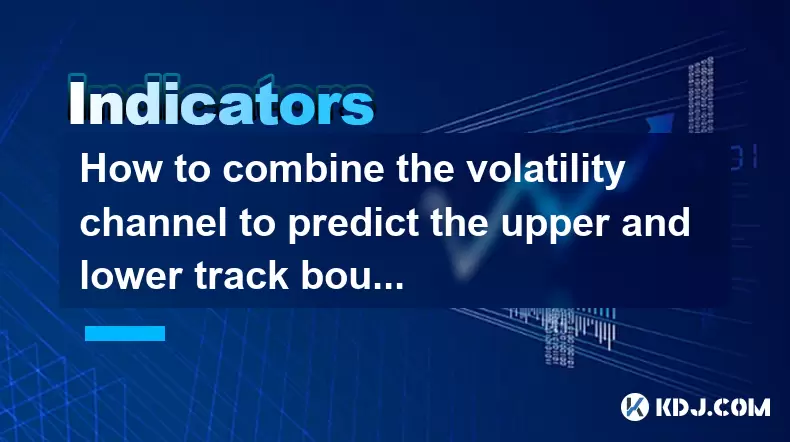
In the world of cryptocurrency trading, understanding and predicting price movements can be a challenging yet rewarding endeavor. One popular tool that traders use to anticipate market trends is the volatility channel. This article will explore how to combine the volatility channel to predict the upper and lower track boundaries of price operations, providing detailed insights into its application within the cryptocurrency market.
Understanding the Volatility Channel
The volatility channel, also known as the Bollinger Bands, is a technical analysis tool developed by John Bollinger. It consists of a middle band being an N-period simple moving average (SMA), an upper band at K standard deviations above the middle band, and a lower band at K standard deviations below the middle band. The volatility channel helps traders identify overbought and oversold conditions in the market, making it an essential tool for predicting price movements.
In the context of cryptocurrencies, the volatility channel can be particularly useful due to the high volatility inherent in these markets. By setting up and interpreting the volatility channel correctly, traders can gain insights into potential price boundaries and make more informed trading decisions.
Setting Up the Volatility Channel
To effectively use the volatility channel for predicting price boundaries, you need to set it up correctly on your trading platform. Here's how you can do it:
- Choose the right time frame: Depending on your trading strategy, select an appropriate time frame. For short-term trading, you might choose a 15-minute or 1-hour chart, while for long-term analysis, a daily or weekly chart might be more suitable.
- Set the parameters: The standard settings for Bollinger Bands are a 20-period SMA and 2 standard deviations. However, you can adjust these parameters based on your trading style and the specific cryptocurrency you are analyzing.
- Apply the indicator: Once you have chosen your time frame and parameters, apply the Bollinger Bands indicator to your chart. Most trading platforms will automatically plot the middle, upper, and lower bands.
Interpreting the Volatility Channel
Once the volatility channel is set up, the next step is to interpret the data it provides. The upper and lower bands of the volatility channel represent potential resistance and support levels, respectively. When the price touches or crosses the upper band, it may indicate an overbought condition, suggesting a potential price reversal. Conversely, when the price touches or crosses the lower band, it may indicate an oversold condition, suggesting a potential upward price movement.
In addition to these basic interpretations, traders often look for specific patterns within the volatility channel. For example, a squeeze, where the bands come closer together, can indicate a period of low volatility and potentially signal an upcoming significant price move. Conversely, a widening of the bands can indicate increasing volatility and potential trend continuation.
Combining the Volatility Channel with Other Indicators
While the volatility channel is a powerful tool on its own, combining it with other technical indicators can enhance its predictive power. Here are some common indicators that work well with the volatility channel:
- Relative Strength Index (RSI): The RSI is a momentum oscillator that measures the speed and change of price movements. When combined with the volatility channel, the RSI can help confirm overbought or oversold conditions. For instance, if the price touches the upper band and the RSI is above 70, it strengthens the case for an overbought condition.
- Moving Average Convergence Divergence (MACD): The MACD is another momentum indicator that can help traders identify potential trend reversals. When the MACD line crosses above the signal line while the price is near the lower band, it can signal a potential bullish reversal.
- Volume: Volume is a crucial indicator in cryptocurrency trading. High volume near the upper or lower bands can confirm the strength of the price movement. For example, if the price touches the upper band with high volume, it may indicate strong buying pressure and a potential continuation of the uptrend.
Practical Application in Cryptocurrency Trading
To illustrate how to combine the volatility channel with other indicators in a real-world scenario, let's consider a hypothetical example with Bitcoin (BTC). Suppose you are analyzing a 4-hour chart of BTC/USD and notice the following:
- The price is touching the upper band of the volatility channel.
- The RSI is above 70, indicating an overbought condition.
- The MACD line has crossed below the signal line, suggesting a potential bearish reversal.
- Volume is increasing as the price touches the upper band.
In this scenario, the combination of these indicators suggests a strong possibility of a price reversal. As a trader, you might decide to take a short position, anticipating that the price will move back towards the middle band or even the lower band.
Monitoring and Adjusting the Volatility Channel
As with any technical analysis tool, it's essential to monitor and adjust the volatility channel regularly. Market conditions can change rapidly, and what worked well in one scenario may not be as effective in another. Here are some tips for monitoring and adjusting your volatility channel:
- Regularly review your settings: Depending on market volatility and the cryptocurrency you are trading, you may need to adjust the period and standard deviation settings of your Bollinger Bands.
- Stay updated with market news: External factors such as regulatory news or macroeconomic events can impact cryptocurrency prices. Keeping an eye on these developments can help you better interpret the signals from your volatility channel.
- Use multiple time frames: Analyzing the volatility channel on different time frames can provide a more comprehensive view of market trends. For example, you might use a 1-hour chart for short-term trading signals and a daily chart for longer-term trend analysis.
Frequently Asked Questions
Q1: Can the volatility channel be used for all cryptocurrencies?
A1: Yes, the volatility channel can be applied to any cryptocurrency. However, the effectiveness may vary depending on the liquidity and volatility of the specific cryptocurrency. For less liquid cryptocurrencies, the signals may be less reliable due to larger price swings and lower trading volumes.
Q2: How often should I adjust the settings of the volatility channel?
A2: There is no one-size-fits-all answer, as it depends on market conditions and your trading strategy. As a general rule, review your settings weekly or whenever you notice a significant change in market volatility. Adjustments might be necessary more frequently for highly volatile cryptocurrencies.
Q3: Can the volatility channel be used for long-term investment strategies?
A3: While the volatility channel is often used for short-term trading, it can also be applied to longer-term investment strategies. By using a longer time frame, such as a weekly or monthly chart, you can identify broader trends and potential entry and exit points for long-term investments.
Q4: Are there any limitations to using the volatility channel in cryptocurrency trading?
A4: Yes, like any technical analysis tool, the volatility channel has its limitations. It may generate false signals during periods of extreme volatility or in low-liquidity markets. Additionally, it should not be used in isolation but rather in combination with other indicators and fundamental analysis to increase its reliability.
Disclaimer:info@kdj.com
The information provided is not trading advice. kdj.com does not assume any responsibility for any investments made based on the information provided in this article. Cryptocurrencies are highly volatile and it is highly recommended that you invest with caution after thorough research!
If you believe that the content used on this website infringes your copyright, please contact us immediately (info@kdj.com) and we will delete it promptly.
- Decentralized Data: Taking the Driver's Seat in the Data Economy
- 2025-08-09 14:30:11
- Bitcoin vs. Gold: The Store-of-Value Showdown in the Digital Age
- 2025-08-09 14:30:11
- BlockDAG, Stellar, and Crypto Adoption: Navigating the Hype
- 2025-08-09 14:50:12
- Litecoin Price Surge: Riding the Wave of Institutional Interest and ETF Hopes
- 2025-08-09 14:50:12
- Chainlink's Wild Ride: Whales Are Still Loading Up on LINK!
- 2025-08-09 15:10:11
- Ruvi AI: Solana's New Challenger Dominating Token Sales with AI Innovation
- 2025-08-09 14:55:15
Related knowledge

What does it mean when the Triple Moving Average (TRIX) turns downward but the price doesn't fall?
Aug 09,2025 at 12:42pm
Understanding the Triple Moving Average (TRIX) IndicatorThe Triple Moving Average, commonly known as TRIX, is a momentum oscillator designed to filter...

What does it mean when the Williams' oscillator repeatedly hits bottoms but fails to rebound?
Aug 09,2025 at 09:28am
Understanding the Williams %R OscillatorThe Williams %R oscillator, developed by Larry Williams, is a momentum indicator used in technical analysis to...
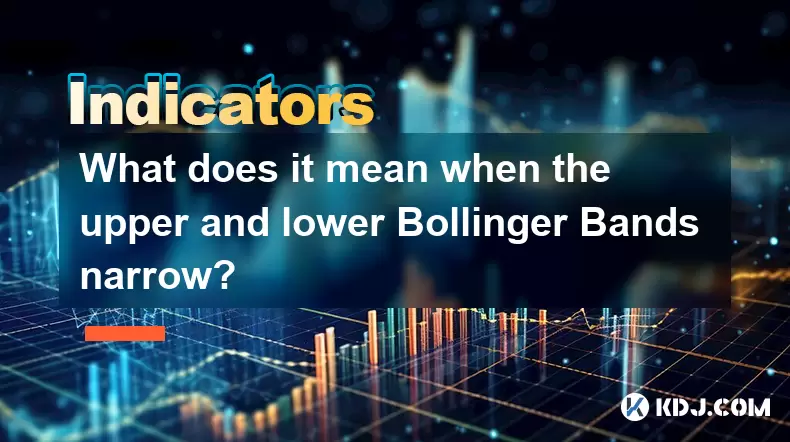
What does it mean when the upper and lower Bollinger Bands narrow?
Aug 09,2025 at 03:00pm
Understanding Bollinger Bands in Cryptocurrency TradingBollinger Bands are a widely used technical analysis tool in the cryptocurrency market, develop...
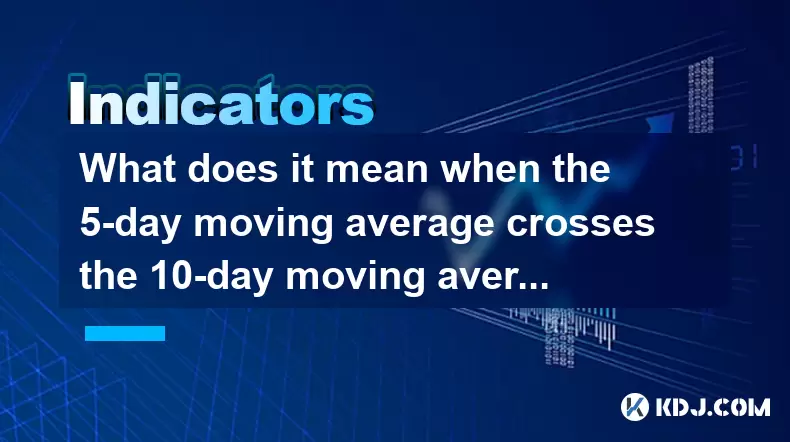
What does it mean when the 5-day moving average crosses the 10-day moving average but the 20-day moving average remains upward?
Aug 09,2025 at 03:35pm
Understanding Moving Averages in Cryptocurrency TradingMoving averages are foundational tools in technical analysis, especially within the cryptocurre...
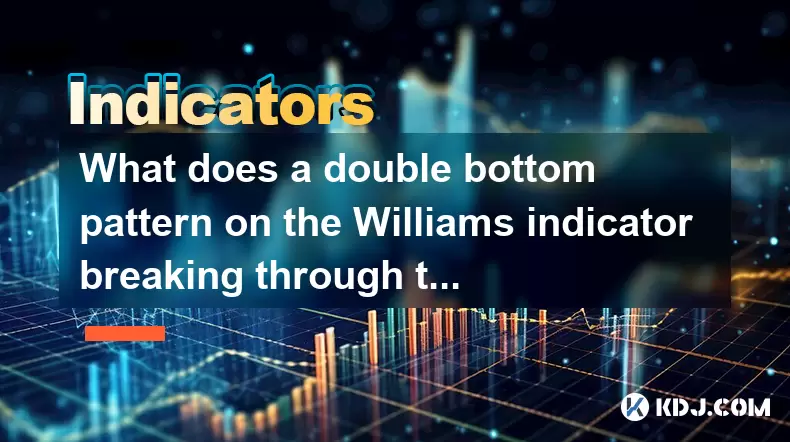
What does a double bottom pattern on the Williams indicator breaking through the 50-day midline indicate?
Aug 09,2025 at 10:56am
Understanding the Williams %R IndicatorThe Williams %R indicator, developed by Larry Williams, is a momentum oscillator that measures overbought and o...
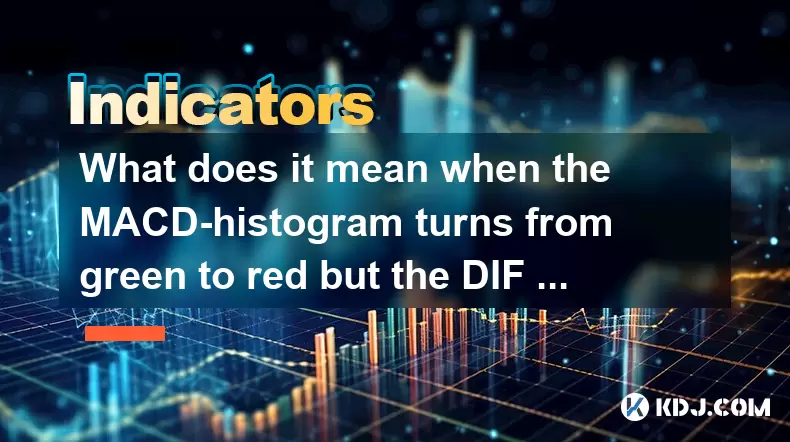
What does it mean when the MACD-histogram turns from green to red but the DIF line fails to form a golden cross?
Aug 09,2025 at 10:15am
Understanding the MACD and Its ComponentsThe MACD (Moving Average Convergence Divergence) is a widely used technical analysis tool in the cryptocurren...

What does it mean when the Triple Moving Average (TRIX) turns downward but the price doesn't fall?
Aug 09,2025 at 12:42pm
Understanding the Triple Moving Average (TRIX) IndicatorThe Triple Moving Average, commonly known as TRIX, is a momentum oscillator designed to filter...

What does it mean when the Williams' oscillator repeatedly hits bottoms but fails to rebound?
Aug 09,2025 at 09:28am
Understanding the Williams %R OscillatorThe Williams %R oscillator, developed by Larry Williams, is a momentum indicator used in technical analysis to...

What does it mean when the upper and lower Bollinger Bands narrow?
Aug 09,2025 at 03:00pm
Understanding Bollinger Bands in Cryptocurrency TradingBollinger Bands are a widely used technical analysis tool in the cryptocurrency market, develop...

What does it mean when the 5-day moving average crosses the 10-day moving average but the 20-day moving average remains upward?
Aug 09,2025 at 03:35pm
Understanding Moving Averages in Cryptocurrency TradingMoving averages are foundational tools in technical analysis, especially within the cryptocurre...

What does a double bottom pattern on the Williams indicator breaking through the 50-day midline indicate?
Aug 09,2025 at 10:56am
Understanding the Williams %R IndicatorThe Williams %R indicator, developed by Larry Williams, is a momentum oscillator that measures overbought and o...

What does it mean when the MACD-histogram turns from green to red but the DIF line fails to form a golden cross?
Aug 09,2025 at 10:15am
Understanding the MACD and Its ComponentsThe MACD (Moving Average Convergence Divergence) is a widely used technical analysis tool in the cryptocurren...
See all articles

























































































